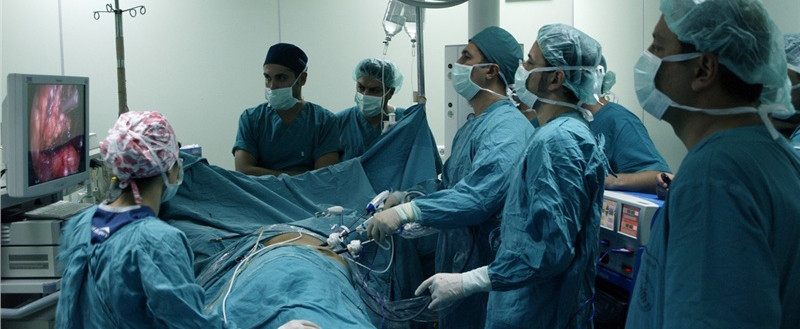Laparoscopy is a type of endoscopy that allows to explore the abdominal cavity with a camera. Laparoscopy is also used in urogynecology. It is preferred in obstetrics and gynecology and in surgeries requiring general surgery. Laparoscopy is performed as an assisted and unassisted procedure. A camera is inserted into the abdominal cavity through a small incision made on the umbilicus. All intraabdominal organs are observed.
Laparoscopy
How is laparoscopy performed?
- It is performed under general anesthesia.
- This surgical technique requiring to be performed with experienced teams in equipped operating rooms require advanced technological infrastructure.
- Laparoscopic surgery, by means of the cannulae inserted through a 1 cm opening made on the umbilicus, the abdominal cavity is inflated with carbon dioxide gas.
- With the telescope advanced behind it, all intraabdominal organs are observed. Depending on the physician’s preference and the characteristic of the disease, the operation is performed with instruments advanced through 2 or 3 incisions of 0.5 cm made on the inguinal region.
- Doctor sees every detail by means of 7-12 times magnification. Glasses and telescope are used to provide 3D view.
Laparoscopic surgery
Usage Areas of Laparoscopy
- Prostate cancer: laparoscopic radical prostatectomy
- BPH: laparoscopic prostatectomy
- Hernia: laparoscopic hernia repair
- Pelvic lymph node pathologies: laparoscopic pelvic lymph node dissection
- Renal cancer
- Ureteropelvic junction obstruction/stenosis
- Nonfunctional kidney
- Donor kidney
- Kidney cyst
- Adrenal cancer
- Renal pelvis stone
- Floating kidney (nephroptosis)
- Ureter stone
- Testicular cancer metastasis
- Undescended testicle
- Uterus
- Rectal prolapse
- Bladder prolapse
- Bladder cancer
- Bladder diverticula
What are the advantages of laparoscopy?
- Smaller scars and cosmetic superiority
- Healing in a short time
- Shorter length of hospital stay
- Reduced need for blood transfusion
- Reduced risk of infection
- Less side effects
- Faster return to daily activities
- Excellent cancer control. Patients who require chemotherapy or radiotherapy are intervened early.
- Lower pain level and reduced amount of pain killer used
- Excess amount of fat in obese patients makes the operation difficult. A good advantage of using labaroscopy is the ability to pass through the adipose tissue easily.
What are the disadvantages of laparoscopy?
- It depends on the risk and type of operation. Lower risk in operations such as in vitro fertilization, tubal ligation, ovarian cysts.
- Higher risk in cancer surgeries, genital abscess and end-stage endometriosis operations
- Complications that may arise during laparoscopic surgery are the same as in open surgery. With experienced physicians, the incidence of these problems is reduced.
Laparoscopic surgery is highly preferred in our country and in the world because of shorter length of hospital stay, faster healing of the wound and fewer incisions. The surgery is performed more professionally in terms of provide convenience to the doctor.
